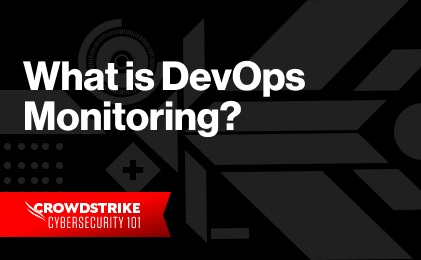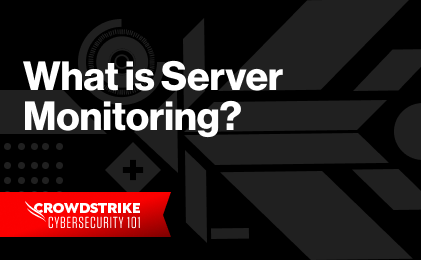Network monitoring is an IT process that continuously monitors and evaluates a computer network and its assets. A network monitoring system proactively identifies and remediates slow network traffic or inadequate network components to ensure network integrity is maintained.
Network monitoring is of increasing importance for many organizations given the rising complexity and sprawling nature of most corporate networks, especially as organizations shift to a cloud or hybrid work environment. In many cases, an advanced network monitoring tool is also a critical component of the organization’s cybersecurity architecture in that it provides the real-time, end-to-end visibility needed to identify early indicators of compromise or indicators of attack that accompany an active cybersecurity event.
Benefits of network monitoring
Network connection failures can disrupt critical business operations and services, which can lead to any number of negative consequences, including diminished profitability, dissatisfied customers or even compliance issues. Network monitoring tools are one way to help detect performance issues and automatically notify the network administrator when a problem arises.
Network monitoring unlocks several benefits to an organization including:
- An increase in network visibility: The continuous scanning of networks provides visibility into all connected devices and their data. This is of particular importance in a cloud-based network where any device in any location can be connected. With improved visibility, administrators can quickly identify issues that may impact performance, including security threats.
- More efficient use of limited IT resources: The network monitoring software automates many key aspects of the network monitoring, analysis and reporting. This reduces the overall workload for IT staff and allows them to focus on critical projects, as opposed to routine, time-consuming tasks that can be managed by technology.
- Cost savings: Proactive and efficient monitoring ensures network downtime is limited and issues are remediated efficiently, thus allowing the business to operate continuously. Network monitoring tools also enable the organization to maximize resources, ensuring that each device is being used in an optimal way and that staff is focusing on high-value tasks. This is especially important for organizations that leverage the public cloud, since tenancy agreements are usually based on a usage-based model.
- Higher quality performance: With an advanced network monitoring solution, performance issues are often identified and addressed before organizations are significantly impacted, which helps strengthen overall network performance. This can significantly improve both business operations and the customer experience.
- Faster identification of security threats: Continuous network tracking and traffic monitoring can reveal early indications of cyberattacks, such as unexpected traffic, unknown devices and uncharacteristic application usage. These tools enable the organization to proactively address these risks during the early stages of an attack when the threat can be more easily contained and damage is limited.
- Identifying infrastructure needs: Network monitoring reports provide an overview of relevant performance metrics based on past and live performance of all network components. Administrators analyze these reports and use the findings to anticipate when an organization may need to update the IT infrastructure based on current or future needs.
Types of network monitoring protocols
Humans alone are unable to monitor and analyze all activities within a network in real time. Network monitoring protocols, or network monitoring solutions, automate many aspects of this process and are a critical capability for collecting, measuring and reporting the data and metrics that ensure optimal network performance.
There are two common examples of network monitoring protocols:
1. The Simple Network Management Protocol (SNMP)
The Simple Network Management Protocol (SNMP) is the most common protocol used to monitor system status and network configuration. SNMP retrieves and organizes data from a variety of managed devices, such as network routers, switches, servers, printers and other endpoints, within a network, including a cloud network.
The data is provided by the management agent of each device and is then collected and stored in the Management Information Base (MIB). SNMP relays any information from the MIB to the network manager, who then uses a graphical user interface (GUI) to display the information. The system will then alert a network administrator to any network incident or issue in need of attention.
2. Internet Control Message Point (ICMP)
Internet Control Message Point (ICMP) is a protocol used by network devices to send error messages when a host or router cannot be reached.
Unlike SNMP, ICMP does not typically exchange data between devices. Rather, the ICMP’s error reporting protocol provides network admins with a quick and straightforward understanding of the root cause of the network error.
Primary use cases for network monitoring
In addition to evaluating network performance, the network monitoring system will also support the following use cases:
Network reporting
The network monitoring system will produce reports that help the IT team visualize system performance and track key metrics. These easy-to-read reports reduce the amount of time the team spends on overall monitoring and analysis and enables them to focus on high-value activity, as well as prioritize actions. Reports may also help streamline reporting and compliance activity for relevant industry groups or government agencies.
Network security
Network monitoring is a foundational element for every cybersecurity strategy in that it establishes the real-time, continuous monitoring and end-to-end network visibility necessary to detect early attack indicators. This helps the organization contain threats and remediate them more quickly, thus limiting any negative impact to the business. The network monitoring software can also be used to enable more advanced security tools and services, such as threat hunting.
Device testing
As the number of endpoints continues to swell due to the shift to the cloud, as well as a rise in personal devices and IoT technology, many businesses are struggling to ensure all devices are operating properly. The network monitoring solution helps ensure that every network device, especially those most critical to system operations, are functioning at the optimal levels.
Requirements for network monitoring tools
With the advancement of cloud-based or hybrid working environments, many organizations now have a complex and sprawling network that is far more difficult to monitor and maintain.
An advanced network monitoring solution allows vast quantities of data across the system to be collected and analyzed, enabling the organization to quickly identify and remediate performance issues or other risks.
While there are many network monitoring solutions available on the market, not all are created equal. Here are several key requirements for a network monitoring tool:
Real-time visibility
- Does the system provide real-time monitoring services for the entire network and all components, including all servers, routers and endpoints?
- Does the solution establish end-to-end visibility, particularly if the organization is leveraging a cloud-based or hybrid environment?
- Does the network monitoring software include a dashboard with an easy-to-read visualization of the entire network infrastructure and its status?
- Does the system provide real-time alerts for any network errors?
- Does the network monitor generate root cause analysis reports to help the IT team prioritize activity and allocate resources?
Operability and integration
- Does the system support a variety of hardware and software components?
- Does the network monitor consolidate all information on a centralized management interface so that administrators can access and share information efficiently?
- Does the system include an ‘application-aware’ network monitoring tool, which allows administrators to identify whether the problem lies within the network or an individual application?
- Does the network monitoring solution ensure protection of confidential data through managed access rights?
Scalability
- Does the system deliver historical trend data and future trend predictions, giving administrators valuable early insight into most likely future behavior of network performance?
- Is it capable of scaling to meet future needs?
Expert Tip
When it comes to scalability, having high data fidelity is critical for companies when scaling their data ingestion. Falcon LogScale provides the data fidelity necessary that other solutions do not offer. Falcon LogScale offers such high data fidelity, customers can skip any de-duping process for their data and significantly decreases storage capacity requirements.
Discover the world’s leading AI-native platform for next-gen SIEM and log management
Elevate your cybersecurity with the CrowdStrike Falcon® platform, the premier AI-native platform for SIEM and log management. Experience security logging at a petabyte scale, choosing between cloud-native or self-hosted deployment options. Log your data with a powerful, index-free architecture, without bottlenecks, allowing threat hunting with over 1 PB of data ingestion per day. Ensure real-time search capabilities to outpace adversaries, achieving sub-second latency for complex queries. Benefit from 360-degree visibility, consolidating data to break down silos and enabling security, IT, and DevOps teams to hunt threats, monitor performance, and ensure compliance seamlessly across 3 billion events in less than 1 second.


